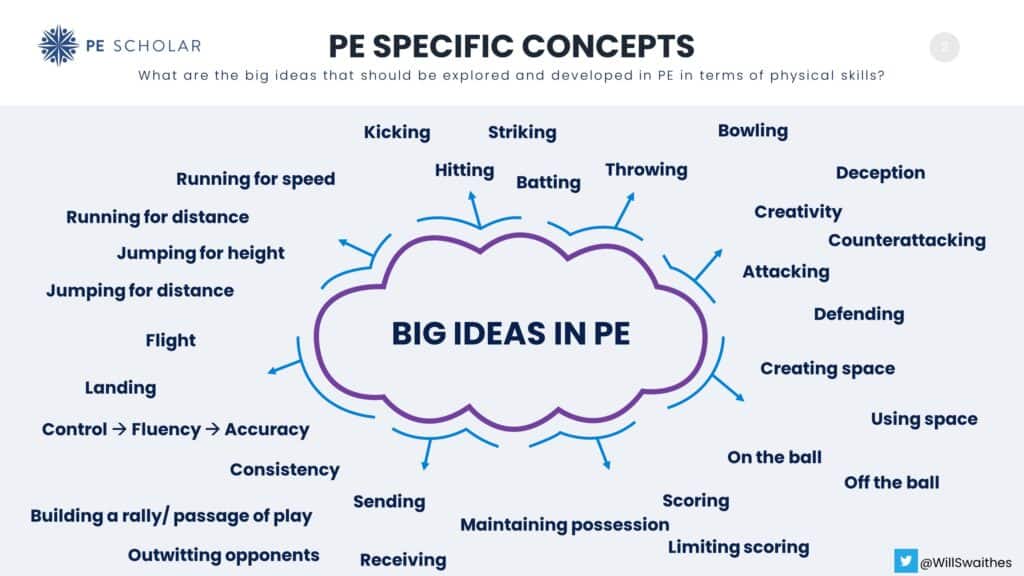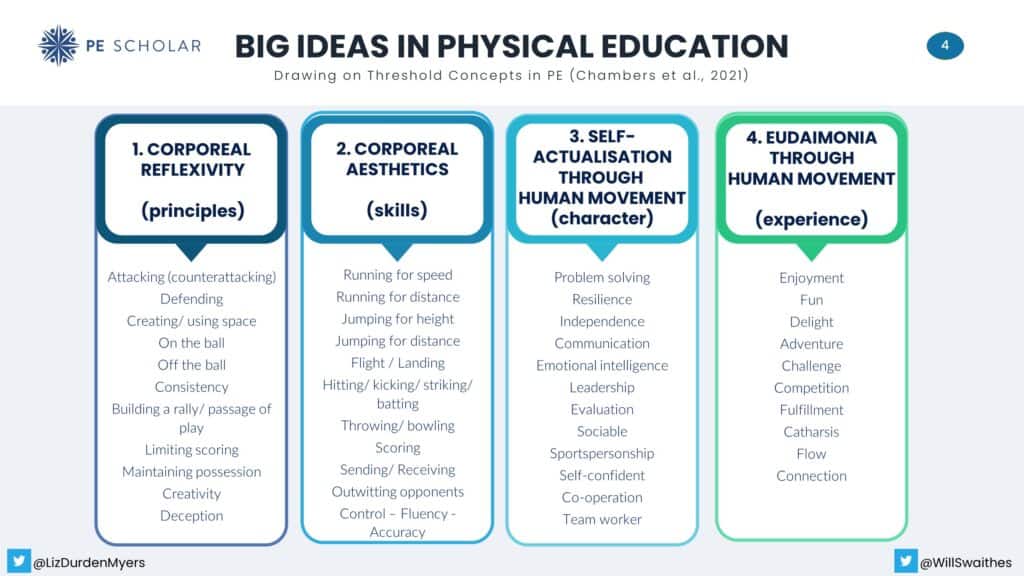
Guest blog by Anna Sheppard Head of PE, The Alice Smith School
PE is evolving with the needs of society. From the recovery of disease to the preparations of war to a winning-oriented curriculum, which coincided with the London 2012 Olympic Games. We are now faced with a mental health crisis and obesity crisis and are looking at PE to fix it.

The PE curriculum is a small piece of a jigsaw. We know that our environment shapes us, whether it be our built environment, our access to the great outdoors, the support we get from our families or the influence of role models, if we have to name just a few. That’s not to say that the PE curriculum is not important. As a PE teacher I believe it’s integral. The refinement of fundamental movement skills, the exposure to a breadth of activities and the development of physical fitness are all part of the journey in developing physical literacy.
Examples of curriculum approaches

There are some amazing examples of PE educators who are using different approaches, all with intent to flourish the next generation of students. Lee Sullivan’s Concept Curriculum moves away from technique and performance, Greg Dryer’s Mi Move is providing key data and insight into the movement choices and motivation of students and Neil Moggan who is supporting schools and developing case studies through trauma informed PE (watch out for his book via PE Scholar).
So, as a Head of Department, which is the best curriculum or approach to take? As stated in my previous post (blog part 1) … it is the one that best fits your students! You absolutely must understand your ‘who’. Phil Mathe often states ‘context is key’.
In my context, we have embraced what we think are the best bits from a range of sources.
Developing physical literacy

We are endeavouring to develop physical literacy. We can’t measure this but we can do as much as possible to support students on their journey. As Greg Dryer recently outlined on the PE Insights Podcast, we do as much as we can to ensure that when a student finishes Year 11 (in our case Year 13) they are still physically active through their own choice.
For us, this means teaching skills, techniques and focusing on knowledge and understanding. In many ways this could be deemed traditional. However, in our approach we consider the activity or vehicle for delivery very carefully. Some of these are traditional sports such as badminton or athletics whilst others are deemed more alternative such as jump rope, parkour and stand up paddle.
The key to our curriculum is the concepts, the big ideas.

How does a concept curriculum work?
Each unit has four key concepts. These could be PE specific or they could be related to values that we would like children to develop.
As an example our key concepts in an invasion games unit could be SPACE, MOVEMENT, CONTROL and ORGANISATION.
A question or provocation for the unit could be …
What is the relationship between movement and space?
Conceptual learning allows students to demonstrate the knowledge and thinking they already have. Our role as educators is to work with the students to deepen this knowledge and thinking and to support students in making the connections to transfer this knowledge or thinking into new situations.
This simple conceptual question could be asked again after a simple game of tag. The response could be students describing how they moved into space to get away from the tagger. However this same question can be developed in more depth for older students with a sport such as basketball where students are considering protecting space by organising the attacking to control the movement of the defence during a set play.
Acquire, Connect and Transfer
I am a huge fan of Julie Stern’s Acquire, Connect and Transfer Model.
The thinking being that students can:

The above is a very simple example of how concepts can be used within PE.
Over time students begin to look for concepts and make connections that can be transferred outside of PE.
For example, if we think broadly, movement and space could relate to many subjects in school. The movement of energy in science. The migration of people in geography. A performance in drama, to name just a few.
Not everyone in your PE class is going to be motivated by sport and certainly not motivated by the creation of space to support the attack in football or whichever sport you are delivering. However concepts allow for students to make their own connections, their own significance and relevance and for you as the teacher to guide this.

Summary
Our way is not the only way. I believe that a PE curriculum must be purposefully designed for the context it is in and most importantly for the students it is for. We have opted for a curriculum that embraces the facilities we have in our school and utilises the experience and passion of the teachers delivering it. Whilst concepts are a focus, we do not shy away from the understanding that a student needs to have the physical skills to be able to access the curriculum and the activity within. A journey of carefully planned activities will help to support a child’s development with this and in our secondary curriculum we use a models-based practice approach to ensure a positive experience with learning.
For educators looking for support with the development of their own PE curriculums I cannot recommend the PE Scholar Curriculum Design Course highly enough. Regardless of where you are on your journey of curriculum design, this course will support even the most experienced physical educator in the development and design of a curriculum that will have your students at the heart of it.
References
PE Scholar. Physical Education Curriculum Design
Stern, J., Ferraro, K., Duncan, K., Aleo, T. (2021) Learning That Transfers: Designing Curriculum for a Changing World, Corwin Press. Available at: Learning that Transfers course
Sullivan, L (2021) Is PE in Crisis?
Sullivan, L (2021) Changing our curriculum offer: From traditional sport to a concept-driven approach
Walker, N (2024). PE Insights Podcast


Responses